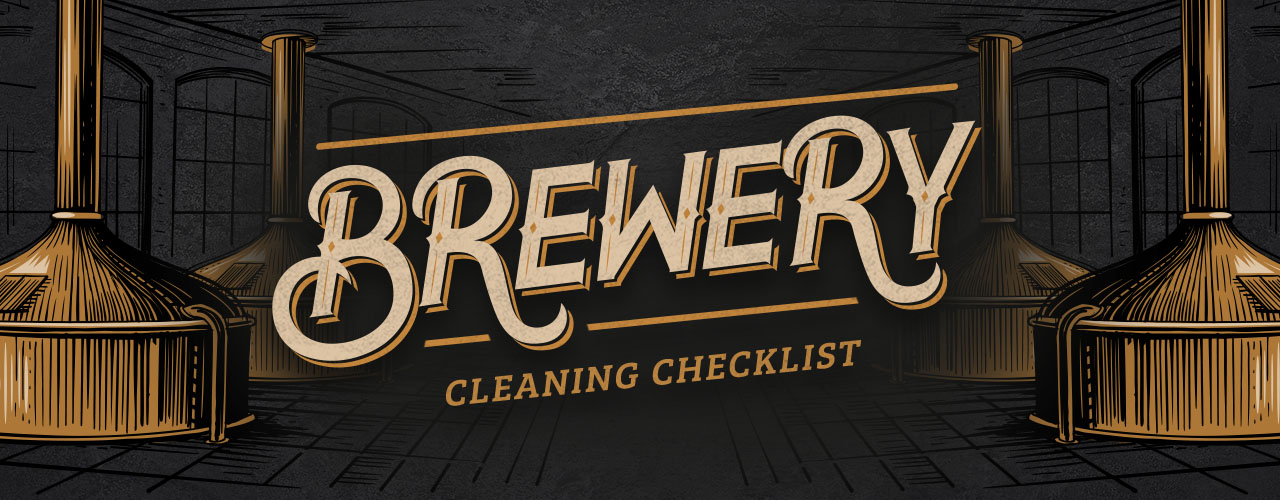
Maintaining a clean and sanitized environment is crucial for breweries to ensure each batch of beer meets high standards. Additionally, breweries must comply with stringent health regulations, making thorough sanitation a non-negotiable aspect of production. Creating a brewery cleaning checklist prevents contamination that could compromise taste, shelf life, and consumer safety. Use our comprehensive guide on effective cleaning procedures for a brewery, including using the right cleaning supplies and avoiding costly errors that might damage your equipment.
1. Essential Brewery Cleaning Supplies
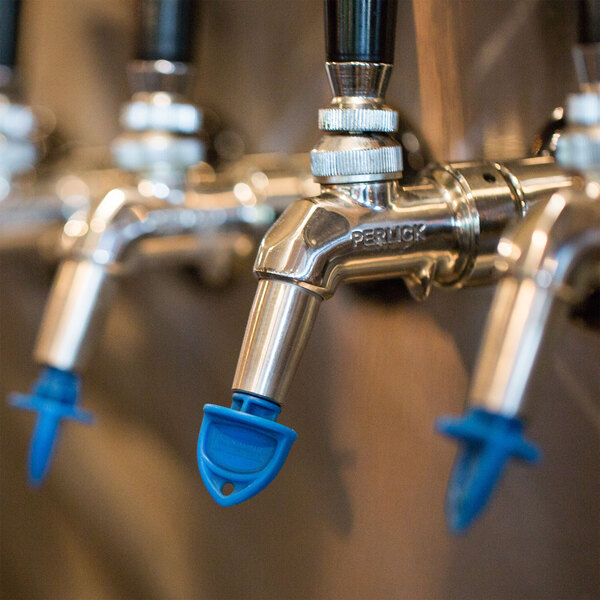
The right cleaning supplies make all the difference in maintaining a safe and efficient brewery. From powerful chemicals to durable equipment and protective gear, these supplies help eliminate contaminants, preserve beer brewing equipment, and ensure regulatory compliance. Below are the essential chemicals, tools, and personal protective equipment (PPE) every brewery needs before beginning to clean.
Brewery Cleaning Chemicals
Cleaning chemicals play a vital role in keeping your brewery spotless. When preparing chemicals, always follow manufacture's instructions on mixing, quantity, and disposal. Additionally, do not mix cleaning chemicals as doing so can cause toxic reactions. Use the following brewery cleaning chemicals to remove residue, kill bacteria, and keep your equipment spotless.
- Caustic soda is a powerful alkaline cleaner commonly found in sodium hydroxide that breaks down organic materials and residue in tanks and pipes.
- Acid-based cleaners remove mineral deposits and beerstone that accumulate on brewing equipment. Phosphoric acid is a popular choice for breweries.
- Sanitizers are essential for killing microbes and bacteria after cleaning. Peracetic acid is frequently used in breweries.
- Specialized detergents are formulated for brewery equipment to tackle difficult residues like hop oils, and they often contain surfactants for maximum efficiency.
Brewery Cleaning Equipment
Use the following brewery cleaning equipment to keep every area of the brewery hygienic and free of contaminants.
- Brushes come in various sizes and are used to scrub tanks, kegs, and pipes. Key variations include include pipe brushes and tank scrubbers.
- Spray nozzles and hoses are essential for rinsing off equipment and applying cleaning solutions under pressure with adjustable nozzles allowing greater control.
- Specialty scrubbers and sponges, such as microfiber sponges, are designed for use on stainless steel and other delicate surfaces without scratching them.
- Organic and chemical waste bins allow you to safely dispose of waste materials. Use different containers for organic waste and chemical byproducts.
- Drain mats or filters, commonly used in floor drains to catch larger particles, prevent debris from clogging drains during cleaning.
PPE Cleaning Equipment
As you clean your brewery equipment, wear PPE to protect yourself from harmful chemicals and fumes.
- Gloves provide hand protection from chemicals, hot water, and other hazards.
- Goggles shield the eyes from splashes of caustic or acidic solutions during cleaning.
- Aprons protect clothing and skin from chemical exposure and spills.
- Masks help prevent inhalation of fumes from strong chemicals and sanitizers.
2. How to Clean the Brewhouse
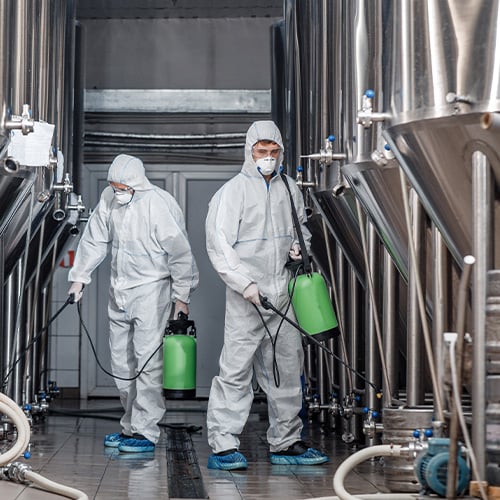
The brewhouse is the brewery's heart, where raw ingredients are transformed into wort before fermentation. This area includes essential equipment - such as the mash tun, lauter tun, kettle, and whirlpool - that require meticulous cleaning to prevent cross-contamination, maintain flavor integrity, and avoid equipment buildup. Residual sugars, proteins, and hop oils can accumulate on equipment and lead to contamination, affecting the quality of future batches. Proper cleaning eliminates this buildup and extends the lifespan of the brewhouse equipment, reducing long-term maintenance costs.
Items to clean: Kettles, mash tuns, lauter tun, whirlpool, and heat exchangers
Frequency: After each batch or brew cycle
- Drain any remaining wort or ingredients from the equipment, then thoroughly rinse all surfaces with warm water to remove loose debris.
- Fill the mash tun, lauter tun, and kettle with a caustic cleaning solution and allow it to circulate through the system for the recommended time.
- Use brushes to scrub interior surfaces, focusing on areas with visible residue or hard-to-reach spots.
- Rinse all equipment with hot water to ensure that no residue remains.
- Use an acid-based cleaner on equipment surfaces to remove beer stone and mineral buildup, following manufacturer guidelines for contact time.
- Rinse the equipment thoroughly with water to eliminate any acidic residues.
- Apply a food-safe sanitizer to all surfaces, ensuring complete coverage, and let it air dry to prevent bacterial growth.
- After cleaning, inspect all equipment surfaces for any missed residue or buildup, and repeat cleaning steps if necessary.
3. How to Clean the Fermentation Tanks

Fermentation tanks are where yeast converts sugars into alcohol and flavor compounds, making this stage crucial for beer quality. These tanks must be cleaned thoroughly between batches to prevent contamination, yeast buildup, and off-flavors in the finished product. Since fermentation tanks are often large and sealed, cleaning requires specialized equipment like CIP (Clean-In-Place) systems and appropriate cleaning chemicals. Avoid using abrasive tools that scratch the tank surfaces, as scratches can harbor bacteria.
Items to clean: Fermentation tank interior, fittings, and attached piping
Frequency: After each fermentation cycle; occasional deep clean to remove organic material
- Drain any remaining beer or yeast sediment from the tank, and rinse the interior with warm water to remove loose residue.
- Rinse warm water through the tank’s CIP system to flush out remaining particles and prepare the tank for cleaning.
- Add a caustic cleaning solution to the CIP system, circulate it through the tank, and ensure complete contact with all interior surfaces to break down organic residues.
- Rinse the tank with hot water to remove caustic solution residues and prevent contamination.
- Run an acid-based cleaning solution through the CIP system to eliminate mineral deposits and beerstone on the tank walls.
- Use the CIP system to thoroughly rinse with clean water, ensuring no acid or cleaning solution remains.
- Apply a food-safe sanitizer through the CIP system to sanitize all tank surfaces and prevent bacterial growth.
- Inspect the tank interior for any remaining residue, and close all tank fittings securely to prepare for the next batch.
4. How to Clean the Bright Tanks
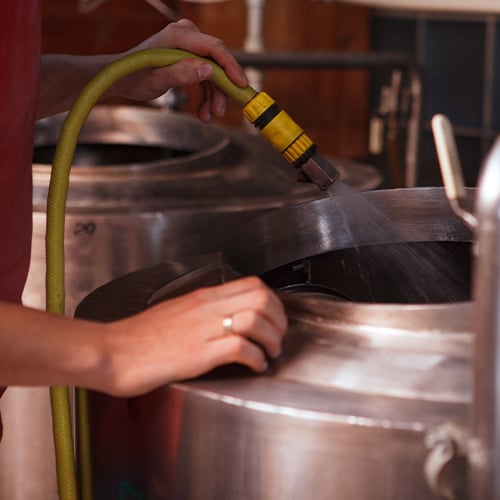
Bright tanks are vessels used for storing, carbonating, and conditioning beer before packaging, making them essential for final product quality. Clean them thoroughly to prevent flavor contamination, bacterial growth, and any residual buildup that could impact clarity and taste. Due to the design, use a Clean-In-Place (CIP) system for efficient cleaning. Avoid abrasive materials to prevent scratches that can trap contaminants.
Items to clean: Tank interior, tank surfaces, fittings, and attached hoses or valves
Frequency: After each batch, deep clean monthly
- Empty any residual beer from the tank and rinse the interior with warm water to remove loose particles.
- Rinse warm water through the CIP system to flush out remaining residues and prepare the tank for cleaning.
- Introduce a caustic cleaning solution into the CIP system and circulate it to break down organic material and remove yeast, protein, and sugar residues.
- Rinse the tank thoroughly with hot water through the CIP system to remove traces of the caustic cleaner.
- Circulate an acid-based cleaning solution to dissolve any mineral deposits or beerstone that may have accumulated inside the tank.
- Perform a final rinse using clean water to flush out any remaining acid cleaner, ensuring the tank is residue-free.
- Apply a food-safe sanitizer through the CIP system to disinfect the interior surfaces and fittings.
- Inspect the tank to ensure it is clean, and close all openings to maintain its sanitary state for the next batch.
5. How to Clean the Kegs and Bottling Equipment
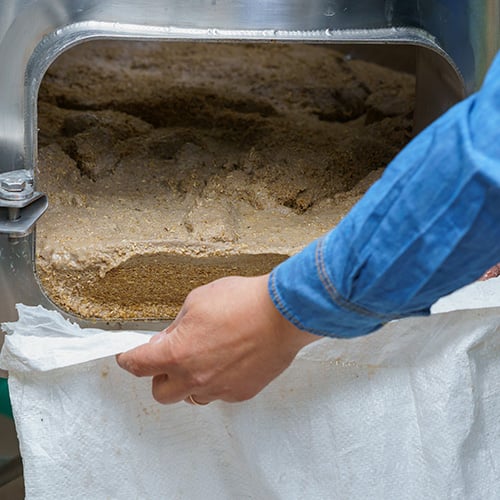
Kegs and bottling equipment are critical for packaging and distributing beer, so they must be meticulously cleaned to prevent contamination and maintain quality. These components come into direct contact with the final product, so any residual bacteria or debris poses a risk to flavor and safety. Clean-In-Place (CIP) systems are often used for keg cleaning while bottling lines require regular sanitizing and manual cleaning of parts that can’t go through the CIP. Harsh, abrasive tools should be avoided to prevent damaging the equipment, which can trap contaminants over time.
Items to clean: Surfaces, valves, and hoses
Frequency: After each use
How to Clean a Keg
Follow these steps to clean your brewery's kegs.
- Rinse each keg with warm water to remove leftover beer or sediment.
- Run a caustic cleaning solution through the CIP system in the keg to break down proteins, yeast, and other organic residues.
- Rinse the kegs with hot water to flush out any remaining caustic solution. For extra cleanliness, run an acid-based solution through the kegs to eliminate mineral deposits and beerstone.
- Rinse the kegs one last time with clean water to ensure they are free of any cleaning agents.
- Apply a sanitizer through the CIP system to disinfect the kegs.
- Seal the kegs immediately to keep them sanitized until filling.
How to Clean Bottling Equipment
Follow these steps to clean your brewery's bottling equipment.
- Separate removable parts, such as hoses, nozzles, and filling heads.
- Rinse all components with warm water to remove loose particles and residual beer.
- Soak removable parts in a caustic cleaning solution to dissolve organic buildup and sanitize.
- Run a caustic solution through any non-removable bottling line components using a CIP system to ensure internal cleanliness.
- Rinse all parts with clean water to flush out any residual caustic solution.
- Perform an acid wash if mineral deposits are present, particularly on surfaces that beer contacts.
- Complete a final rinse, then apply a food-safe sanitizer to all components.
- Reassemble the bottling line, inspect all areas for cleanliness, and ensure all parts are securely in place for use.
6. How to Clean the Piping and Hoses
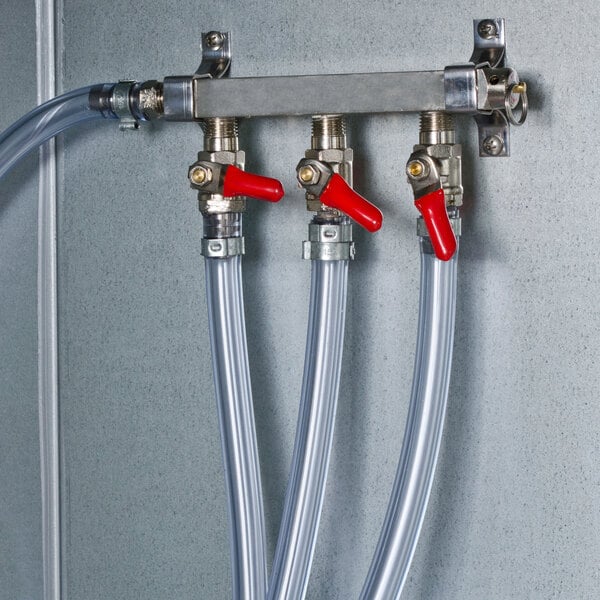
Piping and hoses in a brewery transfer beer and other liquids between equipment. Because they frequently transport raw ingredients and finished beer, maintaining strict cleanliness standards is crucial to prevent cross-contamination and bacterial growth. Piping and hoses can accumulate organic residues, yeast, and beer stone, making them ideal environments for unwanted microorganisms if left uncleaned. Use clean-In-Place (CIP) systems to clean piping and hoses effectively without needing to disassemble them. Manual cleaning may be required for certain hose connections and fixtures.
Items to clean: Internal surfaces that come into direct contact with liquids
Frequency: Weekly or between brews
- Flush the pipes and hoses with warm water to remove any residual beer, yeast, or solids. Inspect them for cracks or leaks.
- Run a caustic cleaning solution through the CIP system connected to the piping and hoses to break down proteins, yeast, and organic matter.
- Flush the solution with hot water to remove any chemical residue.
- Use an acid-based cleaner to remove mineral deposits and beerstone, especially in areas with hard water or frequent usage.
- Rinse thoroughly with clean water to ensure no cleaning agents remain in the piping or hoses.
- Run a food-safe sanitizer through the CIP system to disinfect the internal surfaces of the pipes and hoses.
- Drain any remaining liquid from the hoses and pipes, then allow them to air dry to prevent any residual moisture from fostering bacterial growth.
7. How to Clean the Floors, Walls, and Drains
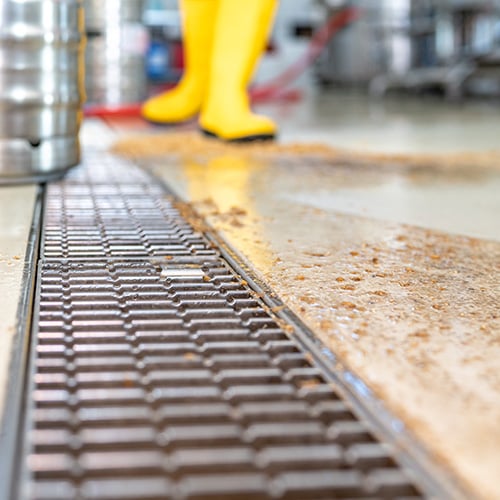
Keeping the floors, walls, and drains clean in a brewery is essential for maintaining a hygienic environment, minimizing slip hazards, and preventing the buildup of bacteria or mold. These surfaces can quickly accumulate spills, yeast, and residue, making them a potential contamination source if not properly maintained. Use floor scrubbers, wall brushes, and drain brushes designed for brewery settings, and avoid high-pressure hoses around sensitive equipment to prevent splash-back contamination. Choose cleaning agents that are safe for brewery environments and effective against both organic and inorganic residues.
Frequency: Daily for floors and drains, deep cleaning weekly
- Sweep the floors with a broom to remove any large debris, grains, or solid waste that may have accumulated.
- Use warm water to rinse the area to loosen any dirt or residue.
- Spread a brewery-safe detergent solution on the floors and walls, using a floor scrubber for the floors and a wall brush for vertical surfaces.
- Use a scrub brush or floor scrubber to scrub the floors and walls, paying attention to corners and areas with higher residue buildup.
- Use a drain brush to scrub inside the drains, removing any organic material and buildup that could cause odors or clogs.
- Rinse the area thoroughly with clean water to remove all chemicals and dislodged residue.
- Apply a food-safe sanitizer to all surfaces to kill any remaining bacteria or fungi.
- Allow the floors and walls to air dry, or use a squeegee to remove excess water from the floors, reducing slip hazards.
Tips for Cleaning a Brewery
Cleaning a brewery requires attention to detail and mindfulness, especially when deciding which chemicals and tools to use on your equipment. Here are a few tips regarding what not to do when cleaning your brewery.
- Do not mix cleaners: Mixing caustic and acid-based cleaners can result in dangerous reactions. Always rinse thoroughly between chemical applications.
- Do not neglect PPE: Personal protective equipment like gloves and goggles is essential for handling caustic and acidic cleaners.
- Avoid abrasive scrubbers on stainless steel: Abrasives can scratch stainless steel, creating areas where bacteria can grow.
- Don’t pour solids or harsh chemicals down the drain: Avoid clogs by collecting solids separately, and dispose of chemicals following local regulations.
- Don’t use excess chemicals: Overuse of cleaning solutions can leave residues that may impact beer flavor or damage equipment.
Regularly cleaning your brewery ensures high-quality brews free from contaminants, extends the life of costly equipment, and keeps operations in line with health and safety regulations. Establishing a standardized cleaning schedule and using a checklist helps staff stay on track so every part of the brewery receives the attention it deserves. A clean, well-maintained brewery safeguards product quality and protects the brand’s reputation, giving customers confidence in every pour. By prioritizing cleanliness, brewery owners set a strong foundation for operational success and build trust with their clientele.





